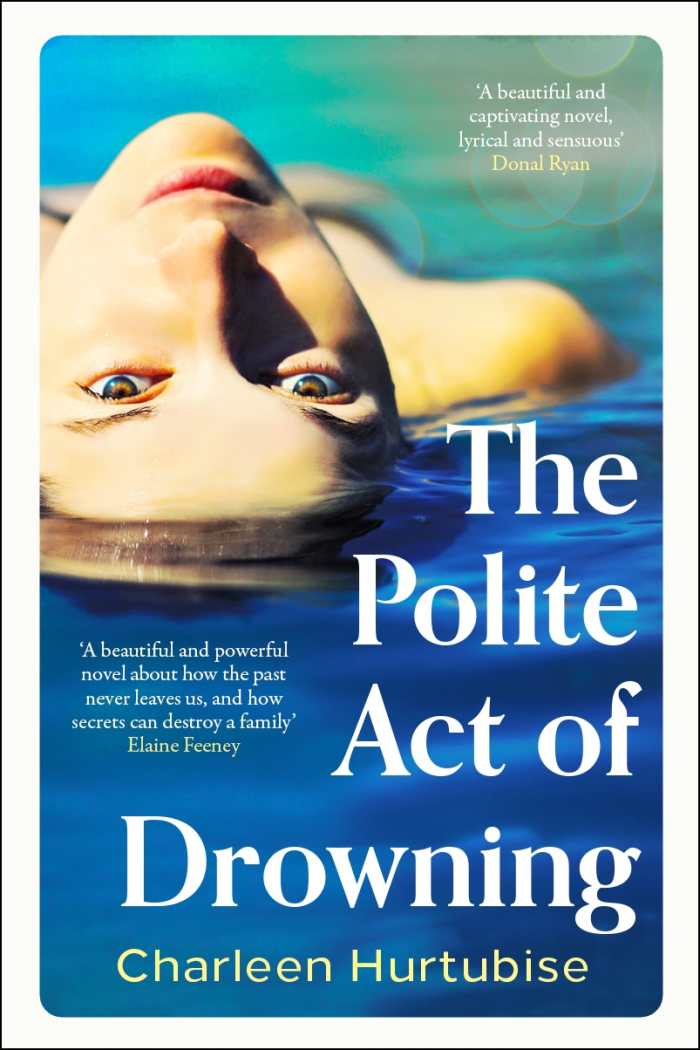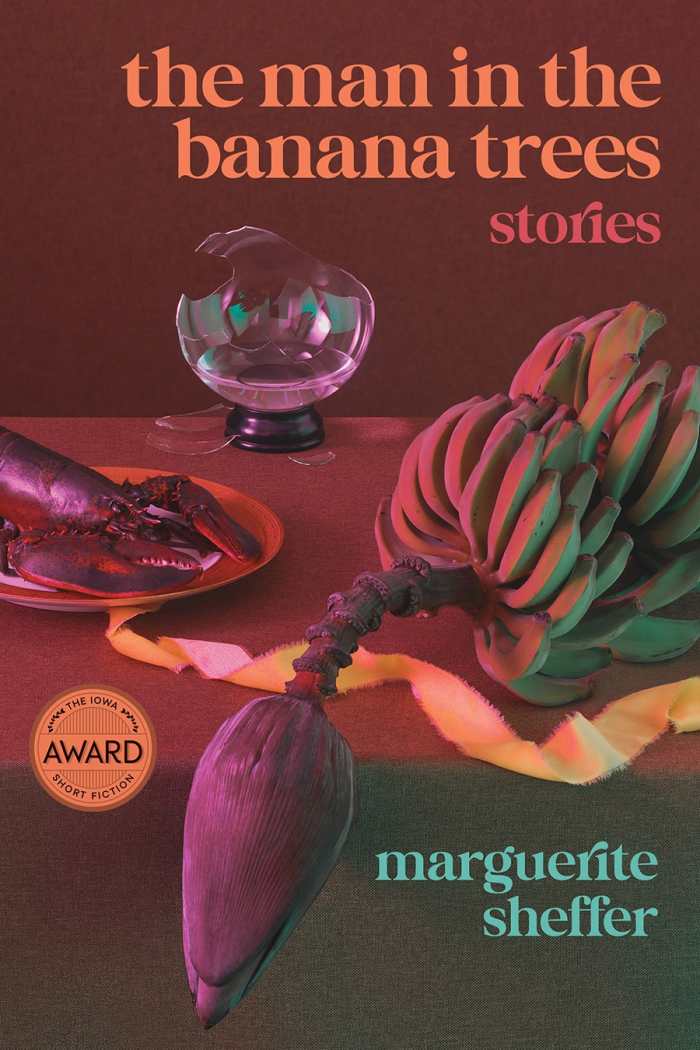Book of the Day Roundup: November 18-22, 2024
The Polite Act of Drowning

Charleen Hurtubise
Eriu
Softcover $15.99 (288pp)
978-1-80418-491-2
Buy: Local Bookstore (Bookshop), Amazon
In Charleen Hurtubise’s novel The Polite Act of Drowning, a small-town accident reawakens past traumas, forcing a girl to reckon with the chaos of her dysfunctional family and come to terms with her evolving identity.
On a family beach day on Lake Michigan, sixteen-year-old Joanne witnesses a young woman’s last moments before she is swept away by the current and drowns. The traumatic event sends ripples through Kettle Lake and reawakens old rumors about a past tragedy involving Joanne’s mother. At home, Joanne notices her mother becoming more unstable, disappearing into the woods for hours at a time and slipping away from reality and her family.
When the neighbors drop by with their new foster children, Joanne is ecstatic to discover a new friend in reckless and alluring Lucinda. The two fast become close. Lucinda draws Joanne into a new world of rebellion, independence, and sexual exploration. As the summer drags on, their relationship grows tense, though. And as Joanne learns more about her family’s secrets, she searches for a sense of safety and acceptance, her hope waning. These multifaceted pressures come to a head in the novel’s thrilling climax, wherein Joanne confronts her mother’s demons head-on.
Sensory and dynamic, the prose revels in the natural beauty and claustrophobic social dynamics of Kettle Lake, all narrated from Joanne’s limited point-of-view: she observes the water as a “boundless plain of mercury rolling like wind through wheat” and how her neighbors are wasted in their limiting jobs and relationships. She also conveys the anxieties and thrills of early adolescence well.
Interweaving themes of trauma, identity formation, sexuality, and grief with delicacy, The Polite Act of Drowning is a coming-of-age tale that cuts to the heart of human experience.
BELLA MOSES (October 14, 2024)
Thank You, Everything

Icinori
Emilie Robert Wong, translator
Enchanted Lion Books
Hardcover $29.95 (176pp)
978-1-59270-423-1
Buy: Local Bookstore (Bookshop), Amazon
A child sets out on a fantastical journey of gratitude in this engrossing picture book. The illustrations defy characterization, with elements of geometric abstraction, neo-Impressionism, and linocut techniques all layered together in a limited palette of blue, red, and yellow. From simple items—hands, sweaters, jam—to more complex concepts—a promise, feelings, fear—this picture book invites children to explore the world around them with new appreciation for the extraordinary and the everyday.
DANIELLE BALLANTYNE (October 14, 2024)
Death in Briar Bottom
The True Story of Hippies, Mountain Lawmen, and the Search for Justice in the Early 1970s

Timothy Silver
The University of North Carolina Press
Hardcover $27.00 (208pp)
978-1-4696-8286-0
Buy: Local Bookstore (Bookshop), Amazon
Set against cultural and generational tensions in the American South, historian Timothy Silver’s gritty true crime book Death in Briar Bottom covers a 1972 incident involving free-living hippies, conservative law enforcement officers, and a tragic death.
On the surface, the death of Stan Altland seemed straightforward: he, along with a few dozen friends from Florida, camped illegally in North Carolina’s western hills en route to a Rolling Stones concert in Charlotte. In response, local sheriff Kermit Banks and several deputies raided the campground, using excessive force to rouse the campers. In the ensuing confusion, Altland was killed by a shotgun blast—a crime that no one was ever convicted of due to a lack of hard evidence.
Compiling witness interviews, trial reports, and FBI documents five decades later, Silver builds a meticulous chronicle of the incident and its aftermath, questioning whether justice was served. Through personal recollections, a sampling of local and national headlines, and inside information on the judges and lawyers who brought their own biases to the situation, his book documents national divisions too: countercultural youths were eyed by rural communities as “longhairs” who indulged in drugs, promiscuity, and violence.
Taking an evenhanded approach, the book acknowledges the rambunctious behavior of Altland’s group while making a compelling case that the local police’s prejudices and malice escalated an already tense situation. And while the death of Stan Altland occurred half a century ago, Silver argues that the issues at the heart of the case—adversarial policing, courts shielding authorities from prosecution—are still germane today. By finding the universal dimensions in a local tragedy, Death in Briar Bottom shows how a true crime story from the past says a lot about persistent national problems.
HO LIN (October 14, 2024)
The Man in the Banana Trees

Marguerite Sheffer
The University of Iowa Press
Softcover $18.00 (160pp)
978-1-60938-995-6
Buy: Local Bookstore (Bookshop), Amazon
Marguerite Sheffer’s short story anthology The Man in the Banana Trees centers on wreckage and restoration.
Many of the stories evince interest in the psychology behind science. In “Rickey,” a teacher struggles to regulate a robot “puppet student”; their forceful attempts to integrate it with the human children are destructive. Elsewhere, supernatural elements are used to sympathize with persistent historical loss. A ghost in “En Plein Air” haunts the island where her artists’ colony was based; her determined attempts to force acknowledgment of her existence and forgotten artwork on its visitors unearths her own blindness to others’ secrets.
These sensitive vignettes grieve castaways and stolen people. In “The Man in the Banana Trees,” a woman mourns her miscarriage of twins, envisioning a malicious demon that snatches away joy. Fragmented introspection and self-referential documentation narrate her loss—a submersion in the rejuvenating but aching potential of creation and storytelling: “I prick my finger on the spinning wheel of my thoughts … to spin it into this story, give it a glint, offer it up as something worthwhile: an artifact, a thing that is buriable because it is at least written down, more or less corporeal.”
Always humanistic, some of the stories are cautionary and angry. “At the Moment of Condensation” satirizes a greedy corporation’s faux benevolence when demanding the arraignment of water thieves, though the natural resource is essential to life. Criticizing irresponsible application of inhuman algorithms, “In the Style of Miriam Ackerman” follows a man’s sabotage of a photography exhibition where artificial intelligence reduces the eccentricity and subjectivity of his aunt’s work into unfeeling, reproducible patterns.
Combining fantasy, history, futurism, and contemporaneity, The Man in the Banana Trees is a mesmerizing and eclectic short story collection that experiments with fabrication, discovery, and human nature.
ISABELLA ZHOU (October 14, 2024)
The Crack at the Heart of Everything

Fiona Fenn
Tiny Fox Press
Hardcover $29.95 (276pp)
978-1-946501-71-4
Buy: Local Bookstore (Bookshop), Amazon
In Fiona Fenn’s romantic fantasy novel The Crack at the Heart of Everything, a dark wizard in exile finds unexpected warmth and love amid the desolation of an apocalyptic world.
Orpheus once stood by the side of Empress Lore and channeled a spell that cracked the world, summoning an army of beasts from the depths of hell. The spell also cast the world into fiery darkness and brought a death curse on Orpheus. Worse, the empress (a childhood friend of his) betrayed him, casting him into the wasteland that his spell brought forth.
The wasteland is a bleak, intense place where the stench of brimstone is pervasive. There, Orpheus is accompanied by Fenrir, a former general who now works against the empress. Orpheus works to undo the death curse, to learn why Lore betrayed him, and to understand why Fenrir is eager to help him. And though he’s focused on these pursuits, he also finds that the wasteland isn’t just home to fire-breathing dragons and monsters, but to people who care and who connect with each other, knowing that giving into constant warfare would be untenable.
The story is anchored by the intense longing between Orpheus and Fenrir. The latter is patient with his tragic-hero counterpart, injecting warmth into their bickering. Above all else, Fenrir’s heart belongs to Orpheus, even if the dark wizard is too closed off to see it.
An unlikely hero must decide between his magic and rescuing the world in The Crack at the Heart of Everything, a charming fantasy novel in which two men strive to fix the brokenness around them.
JOHN M. MURRAY (October 14, 2024)
Kathy Young
